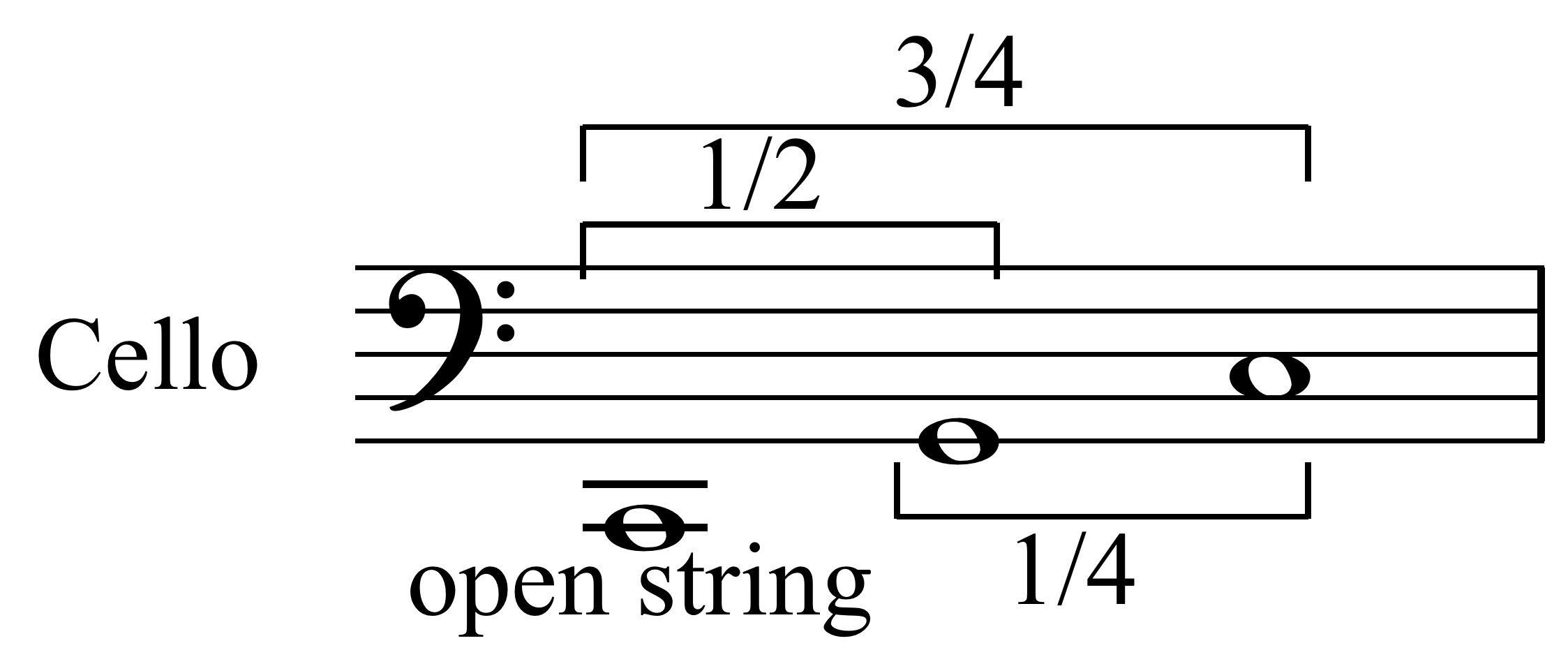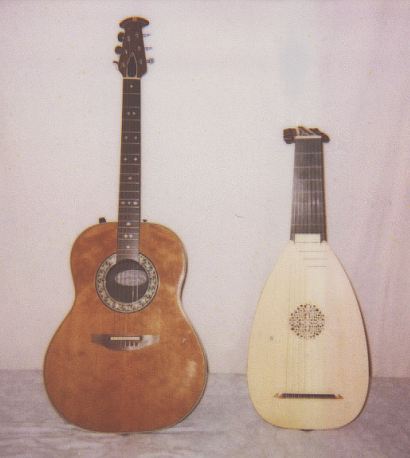|
Frame Zither
Frame zither is a class of musical instrument (subset of zither) within the Hornbostel-Sachs classification system for a type of simple chordophone (stringed instrument), in which the body of the instrument is made from a frame. Frame zithers are musical instruments in which strings are strung across an open frame. They could be similar to harps and psalteries which can also have strings stretched across frames. However, in harps the strings run from the frame to a resonating table embedded into the frame on the frame's other end. Psalteries may also have a frame, but behind the strings (parallel to them) is a board, the top of a box which acts as a resonator. Musicians may add a resonator as is done with a bow harp; they can attach or put the instrument into a calabash gourd or a ceramic pot. Under the Hornbostel-Sachs system of musical instrument classification, any frame with strings stretched across, and without a built in resonator, would count as a frame zither. In music ... [...More Info...] [...Related Items...] OR: [Wikipedia] [Google] [Baidu] |
String Instrument
String instruments, stringed instruments, or chordophones are musical instruments that produce sound from vibrating strings when a performer plays or sounds the strings in some manner. Musicians play some string instruments by plucking the strings with their fingers or a plectrum—and others by hitting the strings with a light wooden hammer or by rubbing the strings with a bow. In some keyboard instruments, such as the harpsichord, the musician presses a key that plucks the string. Other musical instruments generate sound by striking the string. With bowed instruments, the player pulls a rosined horsehair bow across the strings, causing them to vibrate. With a hurdy-gurdy, the musician cranks a wheel whose rosined edge touches the strings. Bowed instruments include the string section instruments of the orchestra in Western classical music ( violin, viola, cello and double bass) and a number of other instruments (e.g., viols and gambas used in early music from the ... [...More Info...] [...Related Items...] OR: [Wikipedia] [Google] [Baidu] |
Chordophone
String instruments, stringed instruments, or chordophones are musical instruments that produce sound from vibrating strings when a performer plays or sounds the strings in some manner. Musicians play some string instruments by plucking the strings with their fingers or a plectrum—and others by hitting the strings with a light wooden hammer or by rubbing the strings with a bow. In some keyboard instruments, such as the harpsichord, the musician presses a key that plucks the string. Other musical instruments generate sound by striking the string. With bowed instruments, the player pulls a rosined horsehair bow across the strings, causing them to vibrate. With a hurdy-gurdy, the musician cranks a wheel whose rosined edge touches the strings. Bowed instruments include the string section instruments of the orchestra in Western classical music (violin, viola, cello and double bass) and a number of other instruments (e.g., viols and gambas used in early music from the ... [...More Info...] [...Related Items...] OR: [Wikipedia] [Google] [Baidu] |
Plucked String Instrument
Plucked string instruments are a subcategory of string instruments that are played by plucking the strings. Plucking is a way of pulling and releasing the string in such a way as to give it an impulse that causes the string to vibrate. Plucking can be done with either a finger or a plectrum. Most plucked string instruments belong to the lute family (such as guitar, bass guitar, mandolin, banjo, balalaika, sitar, pipa, etc.), which generally consist of a resonating body, and a neck; the strings run along the neck and can be stopped at different pitches. The zither family (including the Qanún/kanun, autoharp, kantele, gusli, kannel, kankles, kokles, koto, guqin, gu zheng and many others) does not have a neck, and the strings are stretched across the soundboard. In the harp family (including the lyre), the strings are perpendicular to the soundboard and do not run across it. The harpsichord does not fit any of these categories but is also a plucked string instrument, as ... [...More Info...] [...Related Items...] OR: [Wikipedia] [Google] [Baidu] |
Folk Instrument
A folk instrument is a musical instrument that developed among common people and usually does not have a known inventor. It can be made from wood, metal or other material. Such an instrument is played in performances of folk music. Overview The instruments can be percussion instruments, or different types of flutes or trumpets, or string instruments that are plucked, hammered or use a form of bow. Some instruments are referred to as folk instruments because they commonly appear in folk music, even though they do not meet the criteria defining a folk instrument; an example is the harmonica. List of folk instruments * accordion * alboka *angklung *appalachian dulcimer *autoharp *bagpipe *balalaika *bandura *banjo *bağlama * binioù kozh * birimbau *bodhrán *bombard *bouzouki & Irish bouzouki *bass * brommtopp *bukkehorn *bullroarer *cajón *catá *cavaquinho *Celtic harp * chajchas *charango *çığırtma *çifteli *cimbalom *claves *concertina * concheras * cuatro *daegeum ... [...More Info...] [...Related Items...] OR: [Wikipedia] [Google] [Baidu] |
Psaltery
A psaltery ( el, ψαλτήρι) (or sawtry, an archaic form) is a fretboard-less box zither (a simple chordophone) and is considered the archetype of the zither and dulcimer; the harp, virginal, harpsichord and clavichord were also inspired by it. Its resonance box is usually trapezoidal, rectangular or in the form of a "pig's head" and often richly decorated. Etymology The psaltery of Ancient Greece ('' epigonion'') was a harp-like stringed instrument. The word ''psaltery'' derives from the Ancient Greek ψαλτήριον (''psaltḗrion''), "stringed instrument, psaltery, harp" and that from the verb ψάλλω (''psállō''), "to touch sharply, to pluck, pull, twitch" and in the case of the strings of musical instruments, "to play a stringed instrument with the fingers, and not with the plectrum." The psaltery was originally made from wood, and relied on natural acoustics for sound production. In the King James Bible "psaltery", and its plural, "psalteries", are used t ... [...More Info...] [...Related Items...] OR: [Wikipedia] [Google] [Baidu] |
Chordophones
String instruments, stringed instruments, or chordophones are musical instruments that produce sound from vibrating strings when a performer plays or sounds the strings in some manner. Musicians play some string instruments by plucking the strings with their fingers or a plectrum—and others by hitting the strings with a light wooden hammer or by rubbing the strings with a bow. In some keyboard instruments, such as the harpsichord, the musician presses a key that plucks the string. Other musical instruments generate sound by striking the string. With bowed instruments, the player pulls a rosined horsehair bow across the strings, causing them to vibrate. With a hurdy-gurdy, the musician cranks a wheel whose rosined edge touches the strings. Bowed instruments include the string section instruments of the orchestra in Western classical music (violin, viola, cello and double bass) and a number of other instruments (e.g., viols and gambas used in early music from the Baroq ... [...More Info...] [...Related Items...] OR: [Wikipedia] [Google] [Baidu] |



